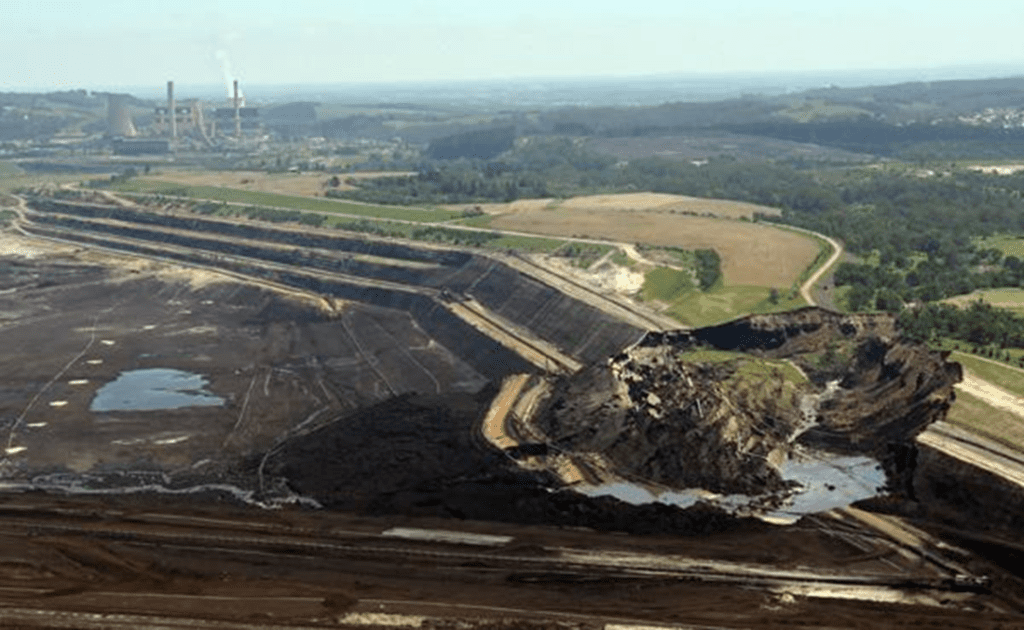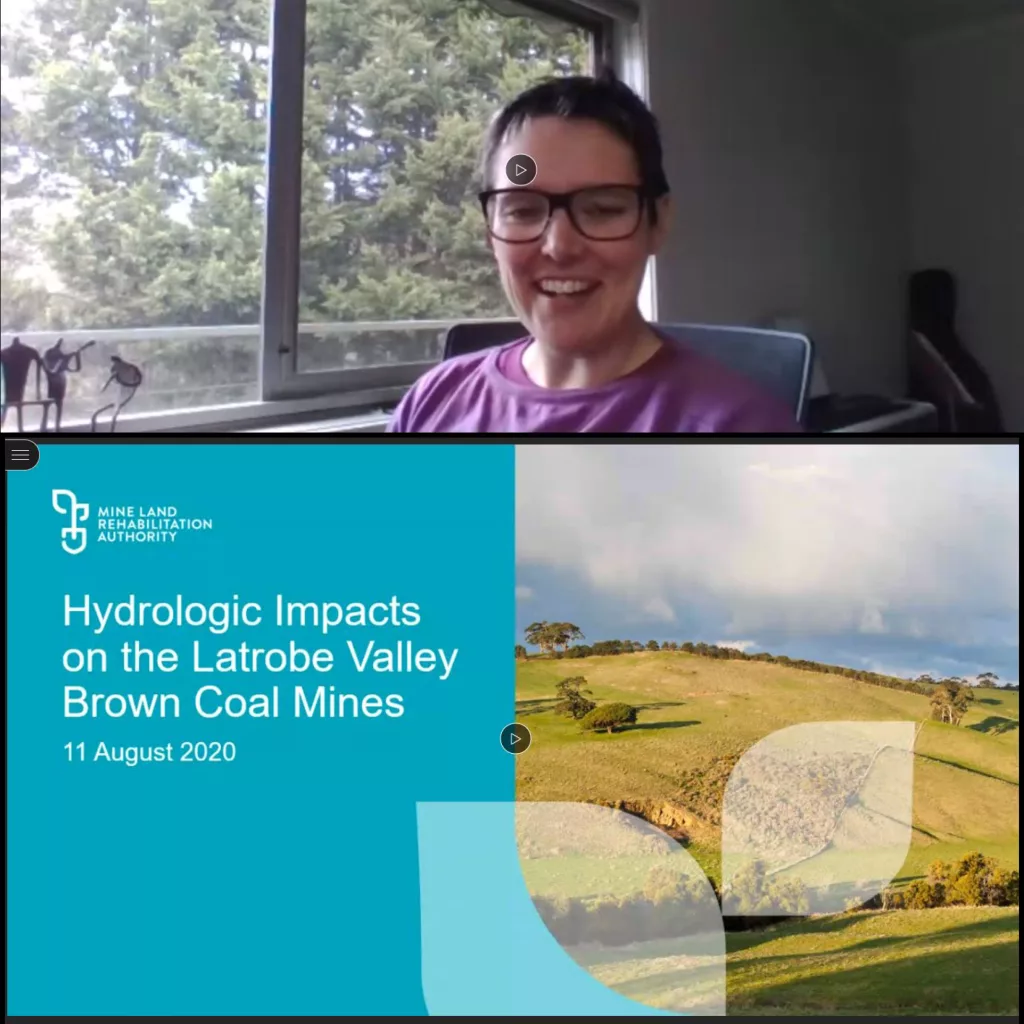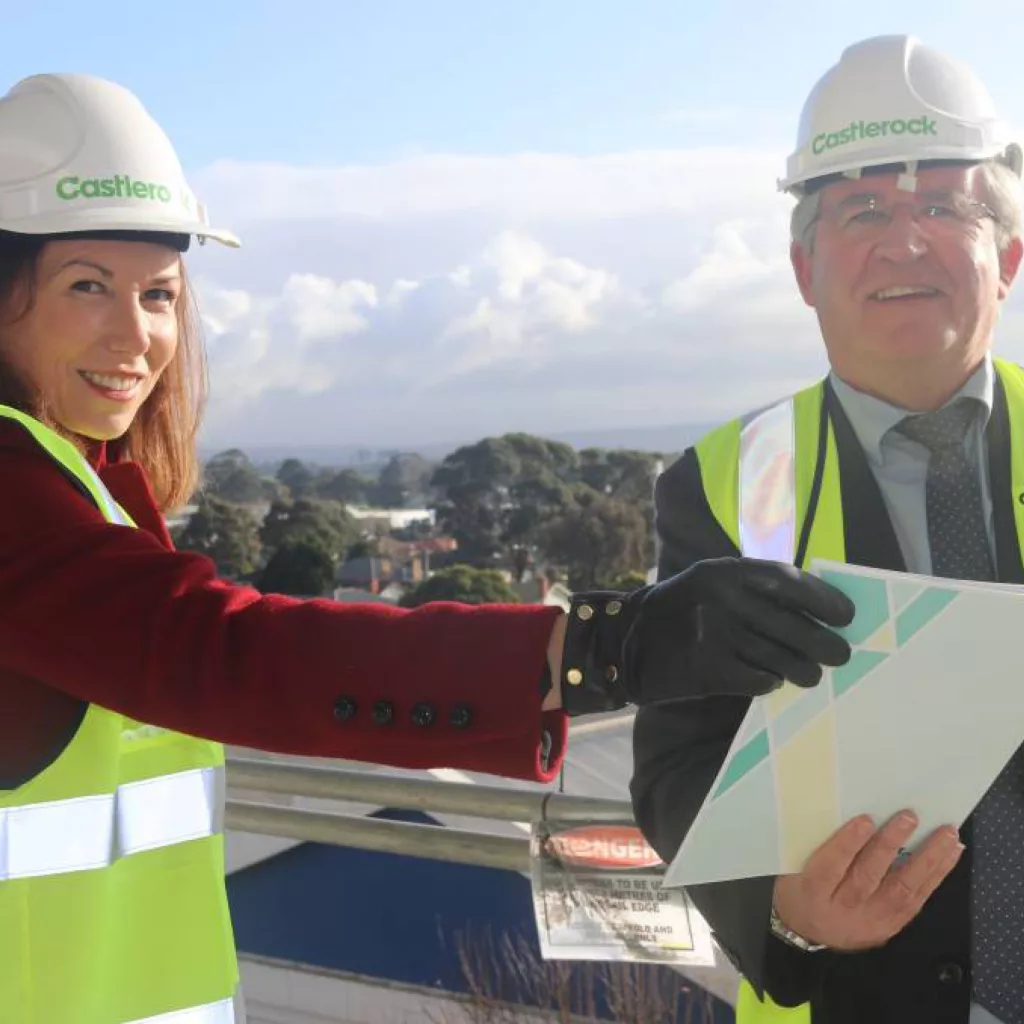In this issue:
- A message from the Minister for Resources
- Who does what in mine rehab?
- Next steps for the LVRRS
- Batter Stability Project complete
- Meet with us – virtually
From the Executive Chair
Welcome to our first edition of The Mine Land Post.
The last few months have covered the beginnings of the Mine Land Rehabilitation Authority, including our launch in late June. I was delighted to accompany the Minister for Resources Jaclyn Symes at the Latrobe Valley GovHub in Morwell, who announced the commencement of the authority and the release of the Victorian government’s Latrobe Valley Regional Rehabilitation Strategy (LVRRS).
Our role as a new Authority absorbs the functions of the office of the Latrobe Valley Mine Rehabilitation Commissioner, who monitored mine rehabilitation in the Latrobe Valley since June 2017.
As the former Commissioner, I am delighted to have been appointed to my new role as Board Chair of the Authority. Most importantly, I am very pleased to be joined by five local and expert board members – Christine Trotman, Claire Miller, Corinne Unger, Ian Gibson, and Ian Nethercote – who share a dedicated interest in mine rehabilitation and in planning for a strong future for the Latrobe Valley and the authority.
Joining the MLRA are Technical Advisors Mark Pratt and Rhonda Hastie and Engagement Officer Mary Mathew who have continued in their roles from the Commissioner’s office. These appointments stand us in good stead to continue working with the community, government and industry in overseeing the rehabilitation planning of declared mine land to ensure transition to safe, stable and sustainable post-mining landforms in Victoria.

On the ground, we’ve been working closely with the Department of Jobs, Precincts and Regions’ Earth Resources Regulation (ERR) unit in reviewing AGL Energy’s work plan variation for the Loy Yang mine, and ENGIE’s rehabilitation and closure plan for Hazelwood. As part of the Board’s first monthly meeting in July, our Board members toured the Hazelwood mine, where bulk earthworks have been underway in preparation for filling – ENGIE’s proposed rehabilitation plan, which is currently under review by ERR.
In August, the Board also had the opportunity to meet with members of the Latrobe Valley Mine Rehabilitation Advisory Committee. It was great to have the committee share the knowledge that they have built over the last three years in providing advice and input in to the LVRRS, and who are now supporting its early implementation.
The Latrobe Valley is arguably advanced in the mine rehabilitation conversation, with a range of key stakeholders – not just mine licensees – involved in the final outcome. As planning progresses, this work could be shared nationally and supported further with the launch of a new Cooperative Research Centre for Transformations in Mining Economies. We were delighted to facilitate a meeting with CRC-TiME representatives recently to explore the appetite for a potential hub in the Latrobe Valley. I look forward to seeing this evolve as we continue to navigate the challenges and opportunities underpinning the planning for rehabilitation and mine closure.
Rae Mackay
Board Chair
A message from the Minister for Resources
I would like to welcome the creation of Victoria’s new Mine Land Rehabilitation Authority. It’s exciting to have this new body to help shape the future of mine rehabilitation in Victoria.
Whether it’s the gold rush of the 1850s or the coal-generated electricity that helped grow the state’s economy, mining has had an important role in Victoria.
We must manage our larger mining sites carefully to ensure mining leaves a positive legacy on our landscapes and communities.
One of the many positive outcomes of the awful 2014 Hazelwood Mine Fire is the creation of this new authority.
Since the 2014 fire, the complex issues the Victorian Government has faced have been responded to in a constructive way – an inquiry into the issues, studies to address identified gaps in knowledge, the development of a remedial action strategy, the appointment of Victoria’s first mine rehabilitation commissioner to oversee this work, and now an independent authority to oversee the implementation of the strategy.
The new authority will initially focus on the three declared mines in Victoria, the Latrobe Valley’s Hazelwood, Yallourn and Loy Yang brown coal mines.
This is why the new authority will be based in the new Latrobe Valley GovHub, at Morwell, alongside the communities who need the authority’s work to be successful.

The authority will be supported by board chaired by Professor Rae Mackay. Professor Mackay will be assisted by Deputy Chairperson Ms Christine Trotman and board members Mr Ian Nethercote, Mr Ian Gibson, Ms Corinne Unger and Claire Miller.
The advisory committee to support the new board will continue as the authority is established.
By working with community, industry, and government, the Mine Land Rehabilitation Authority will make sure the final rehabilitated landscapes are safe and are of benefit to the region.
The Latrobe Valley Regional Rehabilitation Strategy will guide planning for the three brown coal mines, now and post-mining.
The authority will now work with the mining operators to plan and deliver the safe rehabilitation of the mines over the coming decades.
We have set the right path for progress and the necessary building blocks are in place, both for mine rehabilitation and the economic transition of the Latrobe Valley.
I look forward to seeing the work of the new authority develop strongly as part of the broader effort to build a positive future for the Latrobe Valley.
Jaclyn Symes MP
Minister for Resources
Who does what in mine rehab?
A range of stakeholders are working together in planning for the rehabilitation of the Latrobe Valley brown coal mines.
As an independent body, here’s a snapshot of how we’re involved.
| Role of stakeholders | Role of the Mine Land Rehabilitation Authority |
| Community | Inform, educate and engage with the community about mine rehabilitation and ensure locals have a say in relation to the planning for rehabilitation of declared mine land. |
| Industry Mine licensees – the holder or the former holder of a license that covers declared mine land. A licensee is required to achieve a landform that is safe, stable and sustainable under the Mineral Resources (Sustainable Development) Act 1990 (Vic). The mine licensee also has the duty to minimise environmental, health and safety impacts on the environment and the community. | Engage with declared mine licensees to provide advice and recommendations on their rehabilitation planning and work plan variations. |
| Government Earth Resources Regulation (ERR) – enforces, monitors and manages compliance of mining activities under the Mineral Resources (Sustainable Development) Act 1990 (Vic). Environment Protection Authority (EPA) – works closely with ERR and regulates pollution and makes regulatory decisions under the Environment Protection Act 1970. WorkSafe Victoria – works closely with ERR, enforces occupational health and safety laws and helps organisations avoid workplace injuries. Department of Environment, Land, Water and Planning (DELWP) – shares responsibility with ERR to minimise the impact of mining on the environment and the community. Department of Jobs, Precincts and Regions (DJPR) – the lead agency working with DELWP to implement the LVRRS. | Review work plan variations and rehabilitation and closure plans submitted by declared mine licensees to ERR; and monitor and evaluate the effectiveness and implementation of the LVRRS. We’ve also adopted new functions for rehabilitation and post-closure. This includes: – Overseeing other declared mines alongside Latrobe Valley brown coal mines. – Being consulted with as part of the Minister’s decision on satisfying closure criteria. – Monitoring environmental processes. – Establishing a register of declared mine land. Monitoring registered mine land post closure. – Owning post-closure mine land or land in close proximity if required. Rehabilitating, maintaining and managing registered mine land if required. |
Next steps for the Latrobe Valley Regional Rehabilitation Strategy
The Victorian government’s Latrobe Valley Regional Rehabilitation Strategy (LVRRS) released in June builds on four years of studies to guide the planning for rehabilitation of the three Latrobe Valley brown coal mines.
While the strategy gives mine licensees more clarity around rehabilitation options, it also outlines a timeline of actions now underway, that will assist them to further their rehabilitation plans:
| Implementation action | Completion date |
| Providing guidance on water resource planning under alternative climate change scenarios | By the end of 2020 |
| Developing new Declared Mine regulations | By March 2021 |
| Providing guidance on potential water sources and access arrangements that would enable mine licensees to undertake rehabilitation | By June 2021 |
| Further assist the feasibility of alternative water sources for mine rehabilitation | By June 2021 |
| Identify alternative and contingency rehabilitation options to manage land stability and fire risks if sufficient water isn’t available | By June 2021 |
| Support the Integrated Mine Research Group (IMRG) | By the end of 2026 |
The development of the LVRRS has been independently overseen by the Latrobe Valley Mine Rehabiltiation Commissioner. Moving forward, our role as the Mine Land Rehabilitation Authority, will be monitoring and evaluating its effectiveness and implementation.
For more information about the LVRRS implementation actions, visit:
Batter Stability Project complete
Open-cut mine safety has been the focus of four years of research as part of a Batter Stability Project which has recently been completed at the Yallourn mine.
A range of geotechnical and hydrogeological field investigations have been undertaken by EnergyAustralia and Federation University’s Geotechnical Hydrogeological Engineering Research Group (GHERG) who has led the $2.2 million project funded by the Victorian government.
The work included surveying the mine batters (the sloping pit walls between the top of the mine and its floor); drilling bore holes to install monitoring systems to test for things like stress distribution, material properties and groundwater pressure; carrying out pressure meter testing; and using state-of-the-art computer simulation, and advanced laboratory testing. All practical tests have been finalised, and three of four project-linked PhD theses have been completed.
The project follows a block sliding event at Yallourn in 2007 when water pressures in a joint along the rear of the northern wall caused it to collapse and allowed the Latrobe River to spill into the mine. The Victorian government established an independent Technical Review Board (TRB) comprising of a team of experts with international mining experience, who in 2016, recommended a research project to study risk factors affecting batter stability in mines to make them safer, and the Batter Stability Project was launched.

Our MLRA Board members Rae Mackay and Corinne Unger have served as members of the TRB. Consequently, Rae has been involved in the Batter Stability Project both as Director of GHERG, and later as an observer in his role as Latrobe Valley Mine Rehabilitation Commissioner – given the importance of this project for future rehabilitation. As Commissioner, Rae attended all Technical Advisory Group meetings for the project, as well as attended GHERG’s Advisory Committee meetings.
While it’s hoped the findings from the research at Yallourn can be applied to the Latrobe Valley’s other brown coal mines, it’s also a project that has formed one component of the Integrated Mine Research Group (IMRG) – another initiative Rae was involved in as Commissioner, and one which the MLRA will continue to observe and provide advice.
The IMRG is made up of the three Latrobe Valley brown coal mine licensees and was established in 2016 on the recommendation of the 2015 Hazelwood Mine Fire Inquiry. The IMRG pools the activities and directions for research of the three mines as part of a 10-year research plan which began in 2017 and will be supported by the LVRRS by the end of 2026.
Meet with us – virtually
During COVID-19, we’ve changed the way we engage so that we can continue to encourage community conversations about mine rehabilitation, whilst complying with social distancing rules and to help keep the community safe.
Over the last few months, our team has met with members of the Latrobe Catchment Landcare Network, the Latrobe Valley U3A Inc., and presented to Landscape Architecture Design students from RMIT University (pictured) – all of which have been virtual.
Online meetings are one of many ways we can help keep you informed about the progress of rehabilitation plans for the three Latrobe Valley brown coal mines.
If you are interested to arrange a meeting with us for your group, please contact us or call 1800 571 966.

Webinars mark the end of the Latrobe Valley Mine Rehabilitation Commissioner’s office
Declared mine regulations, ground movement, water availability in the Latrobe River system, and seawater as an alternative source for mine rehabilitation were the focus of some of the questions received during a final webinar hosted by the Latrobe Valley Mine Rehabilitation Commissioner in June.
Held on the Commissioner’s last day in office, the webinar featured a presentation on the roles and functions of the Mine Land Rehabilitation Authority by guest speaker Laura Cronin, Manager Legislation Reform from the Department of Jobs, Precincts and Regions (DJPR). Anthony Feigl, Acting Director Coal Resources at DJPR, presented on the Latrobe Valley Regional Rehabilitation Strategy, and was followed by a Q&A session also attended by Anna May, Director Water Resources and Assessment from the Department of Environment, Land, Water and Planning.
This webinar was the last of two hosted by the Commissioner, with the first being ‘An overview of mine rehabilitation in the Latrobe Valley: A Commissioner’s perspective’ held in mid-June. More than 160 people attended the events combined.

You can view the presentation slides, responses to your questions, and the recordings at mineland.vic.gov.au/events.
In the news
- Land Design Institute Episode 3 Podcast: Interview with Mine Land Rehabilitation Authority Board member Corinne Unger
- Gippsland FM Our World This Week, 4 July 2020: Interview with Mine Land Rehabilitation Authority Board Chair Professor Rae Mackay
- Latrobe Valley Express, 30 June 2020: State government releases Latrobe Valley Regional Rehabilitation Strategy
- ABC Gippsland, 28 June 2020: Turning Latrobe Valley coal mines into lakes may not be viable, report says

Above: Minister for Resources Jaclyn Symes and Professor Rae Mackay at the Latrobe Valley GovHub in Morwell. Courtesy Latrobe Valley Express.
Get in touch
Our office at Suite 5, 55 Grey Street Traralgon, is closed for the time being in line with COVID-19 restrictions. You can call our team, who are working remotely, on 1800 571 966 during normal business hours, email contactus@mineland.vic.gov.au or send us a message.
Follow us
Connect with us on Facebook @MLRAVictoria
We’re moving
From 2021, we will be located at the Latrobe Valley GovHub, 65 Church Street, Morwell.
Subscribe
Would you like to receive our newsletters via email? Subscribe here.
Download
Download The Mine Land Post – Spring 2020 (PDF 716 KB)

